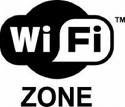
The field of communication is the fastest growing field in science and technology. The advancement in wireless communication was started in 1901 with development of wireless telegraph using Morse code. Wireless networks have many uses, people on the road now can send messages, data, mail, files etc from anywhere in the world. With advancement in the internet technology in the 1980's there is an ever increasing interest in wireless networking.
A network is a group of connected communicating devices such as computer. An internet is a collaboration of more than hundreds of thousands interconnected networks. Private individuals as well as various organizations such as government agencies, schools, research facilities, corporations and libraries in more than 100 countries use the internet.
The internet has revolutionized many aspects of our daily lives. It has affected the way we do business as well as the way we spend our leisure time. Count the ways you've used the internet recently. Perhaps you've sent electronic mail (e-mail) to a business associate, paid a utility bill, read newspaper from a distant city, or looked up a local movie schedule- all by using the internet. Or maybe you researched a medical topic, booked a hotel reservation, chatted with a fellow Trekkie, or comparison-shopped for car. The internet is a communication system that has brought a wealth of information you or fingertips and organized it for our use.
A new technology known as wifi which stands for wireless fidelity was developed which enables the users to transmit data at a fast rate. The whole concept of wifi is based on access points.
Access points.
An access point can be thought as a hardware device or a software which establishes a wireless communication. this access point gets connected to wired local area network such as DSL, cables. Any two systems which are wifi enabled can thus connect without the need of physical connection. It improves the mobility if the nodes.
The access point also allows the user to have a faster connection by providing better bandwidth. Now it is possible for a user to watch movies, download software and play multiplayer games all at the same time, this is all made possible by wifi connection which provides a superior bandwidth over existing networks.
In order to utilize a wifi network to its maximum we should properly understand the basics of it. We should understand the meaning of access points and should know how to install and implement them. As there are numerous benefits of these wifi networks,
You can also find more info on Wi-Fi and Get Wi-Fi Antenna. Topwifireviews.com is a comprehensive resource to know about Wi-Fi Wireless Network Technology.
Article Source: http://EzineArticles.com/?expert=David_Faulkner

